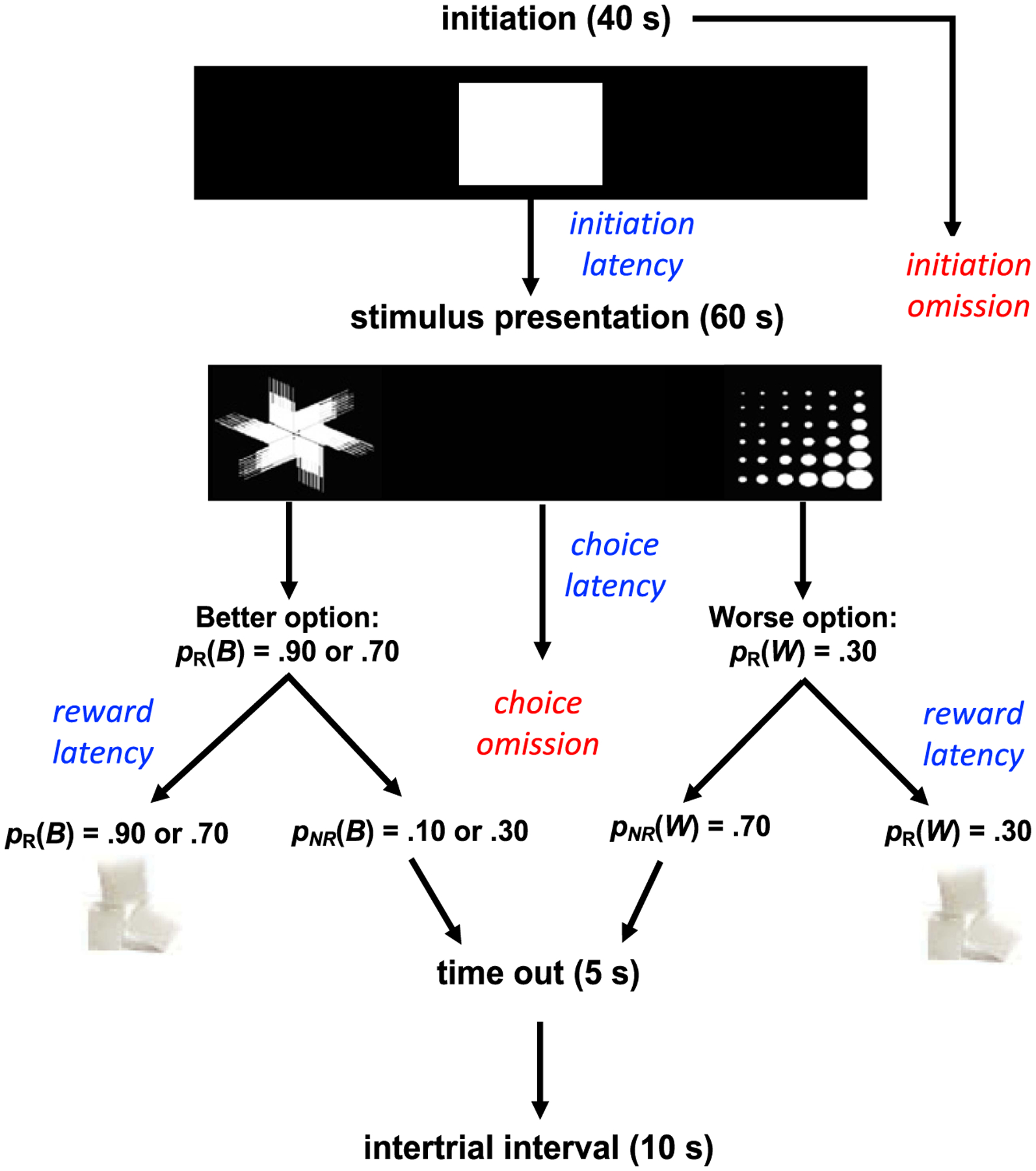Figure 1. Task Design.

Note. Schematic of probabilistic learning task. Rats initiated a trial by nosepoking the center stimulus (displayed for 40 s) and then selected between two visual stimuli pseudorandomly that were presented on either the left and right side of the screen (displayed for 60 s), Assigned as the better (B) and worse (W) options. Correct nosepokes were rewarded with a sucrose pellet with probability pR(B) = .90 or .70 versus pR(W) = .30. If a trial was not rewarded [pNR(B) or pNR(W)], a 5 s time-out would commence. If a stimulus was not chosen, it was considered a choice omission and a 10 s ITI would commence. Rats could also fail to initiate a trial, in which case, it was scored as an initiation omission. If a trial was rewarded, a 10 s ITI would follow reward collection. Other prominent measures collected on a trial-by-trial basis were trial initiation latency (time to nosepoke the center white square), choice latency (time to select between the two stimuli), and reward latency (time to collect reward in the pellet magazine).
